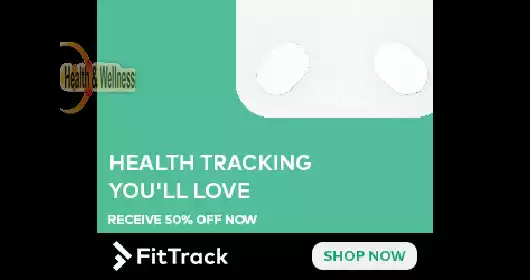Choosing The Right Breakfast Cereal
Choosing The Right Breakfast Cereal in kick-starting your day is not with just any breakfast cereal, but THE perfect one tailored specifically to your taste buds and nutritional needs.
The moment you open your pantry in the morning could be akin to unveiling a treasure trove of delicious, health-packed options, if only you knew how to choose right.
With an aisle at the grocery store dedicated entirely to them, breakfast cereals come in all shapes, sizes, and flavors—each box promising a quick, nutritious start to your day.
But here’s where the plot thickens: Not all cereals are created equal.
Choosing the right breakfast cereal is like selecting the right key for a lock; it unlocks the door to sustained energy levels, nutrients that fuel your body for the day ahead, and of course, a delightfully tasty beginning that makes waking up something to look forward to!
Let’s dive into this exciting journey together and discover how Choosing The Right Breakfast Cereal can transform your mornings from mundane to magical.
Say goodbye to breakfast boredom and hello to a world where every spoonful is an adventure!
Table of Contents Choosing The Right Breakfast Cereal
Bowl of cereal
When it comes to breakfast cereal, the options are seemingly endless.
From sugary varieties that taste like dessert to healthier options packed with fiber and whole grains, there is a cereal out there for everyone.
But how do you choose the right one for you?
One of the best ways to start your day is with a bowl of cereal.
It’s quick, easy, and can be customized to your liking .
But with so many options on the market, it can be overwhelming to decide which one is best for you.
First and foremost, consider your nutritional needs.
If you’re looking for a cereal that will keep you full until lunchtime, opt for one high in fiber and protein.
Look for whole grain cereals that are low in added sugars and artificial ingredients.
Next, think about your taste preferences .
Do you prefer sweet and fruity cereals, or savory and nutty ones? Consider what flavors you enjoy the most and choose a cereal that matches your taste buds.
Additionally, take a look at the ingredient list.
Avoid cereals with long lists of artificial ingredients, preservatives, and added sugars.
Opt for cereals with simple, whole food ingredients that you can pronounce.
Hot cereal
When it comes to choosing the right breakfast cereal, hot cereal is often a popular choice for many people.
Hot cereals such as oatmeal, cream of wheat, and grits are not only comforting and satisfying to eat, but they also provide a warm and nourishing start to your day.
One of the main benefits of hot cereal is that it can be easily customized to suit your taste preferences.
Consider adding fresh fruit, nuts, seeds, or a drizzle of honey to your hot cereal for added flavor and texture.
This will not only enhance the taste but also provide additional nutrients and antioxidants to boost your morning routine.
When choosing a hot cereal, opt for varieties that are minimally processed and contain whole grains.
Look for options that are high in fiber and protein to keep you feeling full and satisfied throughout the morning.
In conclusion, choosing the right breakfast cereal is an important decision that can impact your energy levels, nutritional intake, and overall well-being.
By considering your nutritional needs, taste preferences, and ingredient list, you can select a cereal that not only tastes delicious but also nourishes your body.
So next time you reach for a box of cereal at the grocery store, take a moment to read the labels, compare options, and choose a cereal that will kickstart your day in the best way possible.
Whether you prefer cold cereal or hot cereal, there is a perfect option out there waiting for you.
Make breakfast exciting again by Choosing The Right Breakfast Cereal! Happy cereal hunting!
Fructose Corn Syrup
When it comes to choosing the right breakfast cereal, one of the ingredients that often causes confusion is fructose corn syrup.
This sweetener is commonly found in many cereals on the market today, but its reputation has been tarnished due to concerns about its health effects.
Fructose corn syrup is a type of sugar made from corn starch that has been processed to convert some of its glucose into fructose .
It is often used as a sweetening agent in processed foods, including breakfast cereals, because it is cheap and easy to produce.
While some studies have linked high consumption of fructose corn syrup to health issues such as obesity, diabetes, and heart disease, the evidence is not conclusive.
It’s important to note that consuming moderate amounts of fructose corn syrup as part of a balanced diet is not necessarily harmful.
If you’re concerned about fructose corn syrup in your breakfast cereal, look for options that are sweetened with natural sugars like honey, maple syrup, or fruit puree.
You can also choose cereals that are labeled as “no added sugars” or “low sugar” to avoid this ingredient altogether.
Ultimately, the choice of whether or not to consume fructose corn syrup is a personal one.
It’s important to consider your own health goals, preferences, and dietary needs when making decisions about the foods you consume.
By being informed and mindful of the ingredients in your breakfast cereal, you can make choices that align with your values and support your overall well-being.
Remember, there are plenty of delicious and nutritious cereal options available that can help you start your day off right!
Lean Protein
When you are on a diet, remember that healthy eating starts with what you buy.
Your cart at the grocery store should be balanced the same way you balance your meals.
This means making about half your purchases in produce, a quarter in grains, and the final quarter in lean protein sources.
This way, the healthy options are always available when you get hungry.
To be sure your body is getting proper nutrition, you should eat a balanced diet that includes a combination of protein, carbohydrates, and fat.
Avoid low fat or low carbohydrate diets as these can result in nutritional gaps.
Instead, focus on eating lean protein such as chicken or fish, complex carbohydrates including vegetables and whole grains, and healthy fats such as olive oil or coconut oil.
Consider the Nutritional Content
When choosing the right breakfast cereal, it’s essential to consider the nutritional content.
Look for cereals that are high in fiber, low in added sugars, and fortified with vitamins and minerals.
Fiber helps keep you full and aids in digestion, while limiting added sugars can prevent energy crashes later in the day.
Fortified cereals can provide essential nutrients that may be lacking in your diet, such as iron, vitamin D, and B vitamins.
Some key nutrients to look for in a breakfast cereal include:
– Fiber: Aim for at least 3 grams of fiber per serving to help keep you full and regulate digestion.
– Protein: Look for cereals that have at least 5 grams of protein per serving to help you feel satisfied until your next meal.
– Whole Gr ains: Opt for cereals that list whole grains as the first ingredient, such as whole wheat, oats, or barley.
Whole grains provide essential nutrients and fiber that refined grains lack.
– Added Sugars: Be mindful of cereals with high amounts of added sugars, as they can lead to energy crashes and weight gain.
Look for cereals with no more than 8 grams of sugar per serving.
Healthy Fats
Eat a Mediterranean-style diet to help prevent heart disease.
This includes lots of healthy fats like olive oil, vegetables, whole grains, beans and seafood.
Eating these foods keep your weight and blood pressure down, while supplying your body with fiber and other nutrients it needs to be healthy.
When considering a diet that provides an adequate nutrition level, know that peanut butter is a very healthy choice for you.
Peanut butter contains healthy fats, as well as plenty of protein.
Be sure to use moderation, because it still can be considered a high calorie food.
It is wise to get your protein and healthy fats from a variety of foods.
To keep yourself in top shape, be sure to eat a good, healthy breakfast every morning.
Your body hasn’t had any fuel all night, so it will be ready for a good dose of fuel first thing in the morning.
Give it a breakfast with plenty of carbohydrates, protein, and healthy fats to keep yourself going all day.
High Protein
When choosing high-protein foods, which are also, low fat, it is important how you prepare it.
Some cooking methods can turn a potentially healthy, low-fat protein into a high-fat meal.
Grill or bake your proteins for the lowest fat content.
If you fry or add heavy sauces, your low-fat protein is no longer low-fat.
Beans, beans what a wonderful food.
Studies have shown that eating beans can reduce your chances of developing heart disease and could also prevent breast cancer.
These great properties are thanks to beans’ high protein, vitamin, and fiber content.
To reduce the chance of indigestion, add them to your diet gradually.
While high-protein meats and poultry can be part of a healthy diet, many nutritionists suggest including at least one meat-free meal into your weekly diet.
Instead of meat, add in additional servings of low sodium cooked beans, soy products, or a variety of unsalted nuts like pecans, peanuts, and walnuts.
Low Calories
To design the most nutritious diet possible, try to only put things into your body that your body can actually use.
Fresh fruits, vegetables and meats are best for your body because they are comprised entirely of nutrients that your body can break down and use.
Meanwhile, some processed foods and drinks may have low calories or fat, but they also have low nutritional value.
As you can see, proper nutrition is an easy thing that anyone can do to improve their quality of life.
If you’d like to avoid the problems outlined at the start of this article, like depression and obesity, then don’t hesitate! Improve your nutrition today and start a better life!







